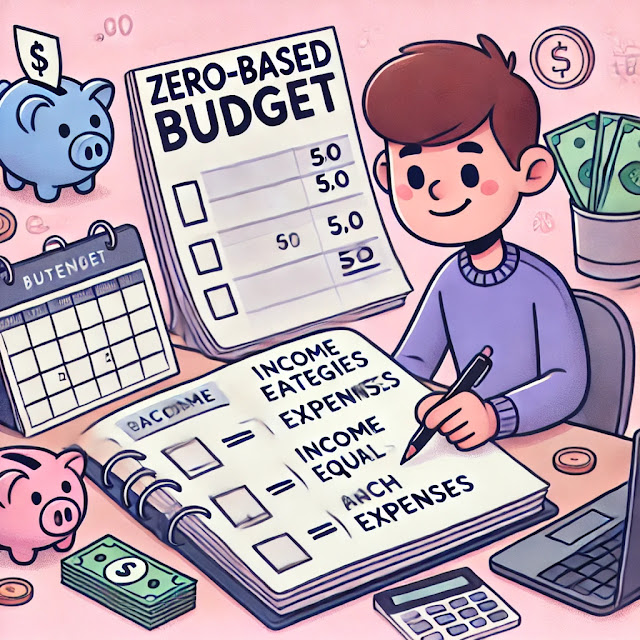What Is Zero-Based Budgeting?
Zero-Based Budgeting (ZBB) is a powerful financial strategy that starts from one simple premise: your income minus your expenses should equal zero.
That doesn’t mean you spend all your money—it means every dollar has a job. Whether it’s going toward bills, savings, debt repayment, or even fun, every cent is planned before the month begins.
In this guide, you’ll learn how zero-based budgeting works, why it’s effective, and how to apply it in your own life—step by step.
Why Use a Zero-Based Budget?
Unlike traditional budgeting, which may use rough estimates or leave “leftovers,” ZBB gives you complete control over your money. Here’s why it works:
-
Total financial awareness – You’ll know exactly where every dollar is going.
-
Better spending decisions – Helps reduce impulse purchases.
-
Accelerated savings – You’re more intentional about building wealth.
-
Debt payoff power – Forces you to prioritize your financial goals.
Step-by-Step: How to Create a Zero-Based Budget
1. Know Your Monthly Income
Start by calculating your take-home pay for the month. If you have a variable income, use the lowest monthly average from the past 3–6 months.
2. List All Your Expenses
Break it down into specific categories:
-
Rent/Mortgage
-
Utilities
-
Groceries
-
Transportation
-
Subscriptions
-
Debt Payments
-
Savings
-
Sinking Funds (e.g. gifts, car repair)
-
Fun/Entertainment
Be realistic, not optimistic.
3. Assign Every Dollar a Job
Now match your income with your expense list until income – expenses = $0. Don’t stop until every dollar is accounted for.
Example:
-
Monthly Income: $3,000
-
Expenses (including savings & fun): $3,000
→ You’ve given every dollar a role.
4. Track & Adjust Weekly
ZBB is proactive, but life changes. Check in weekly:
-
Overspending? Adjust next category.
-
Extra income? Reassign it (don’t just spend it!).
Use a spreadsheet, app (like YNAB or EveryDollar), or a printable template.
Real-Life Example
Michael, a 35-year-old freelancer, was frustrated with inconsistent savings. After switching to ZBB:
He cut $200 in mindless dining.
Paid off $4,000 in credit card debt in 6 months.
Built a $3,500 emergency fund in under a year.
“It gave me control I didn’t know I was missing,” he says.
Common Zero-Based Budget Categories
| Fixed Expenses | Variable Expenses | Savings & Goals |
|---|---|---|
| Rent/Mortgage | Groceries | Emergency Fund |
| Car Payment | Gas & Transportation | Travel Fund |
| Insurance | Dining Out | Retirement |
| Phone/Internet | Subscriptions | Debt Snowball |
| Childcare | Shopping | Investing |
Zero-Based Budgeting Pros & Cons
✅ Pros
-
Increases awareness and accountability
-
Motivates intentional saving
-
Great for any income level
❌ Cons
-
Time-consuming to set up initially
-
Requires consistent tracking
-
Needs discipline, especially at first
Frequently Asked Questions (Q&A)
Q1. Do I really have to budget every dollar?
Yes, that’s the core of ZBB. Even “fun money” or buffer should be assigned a category.
Q2. What if I have an irregular income?
Budget based on your lowest average income, and build flexibility into your spending categories.
Q3. What tools can help with ZBB?
Popular tools include You Need A Budget (YNAB), EveryDollar, or a simple Google Sheets tracker.
Q4. Is this only for people in debt?
Not at all. It’s perfect for savers, investors, and anyone looking to optimize their cash flow.
Final Thoughts: Budget with Purpose
Zero-Based Budgeting helps you take full control of your money, so you can stop wondering where it went and start telling it where to go. It’s not just about money—it’s about peace of mind.
Give every dollar a job. Give your future a plan.

